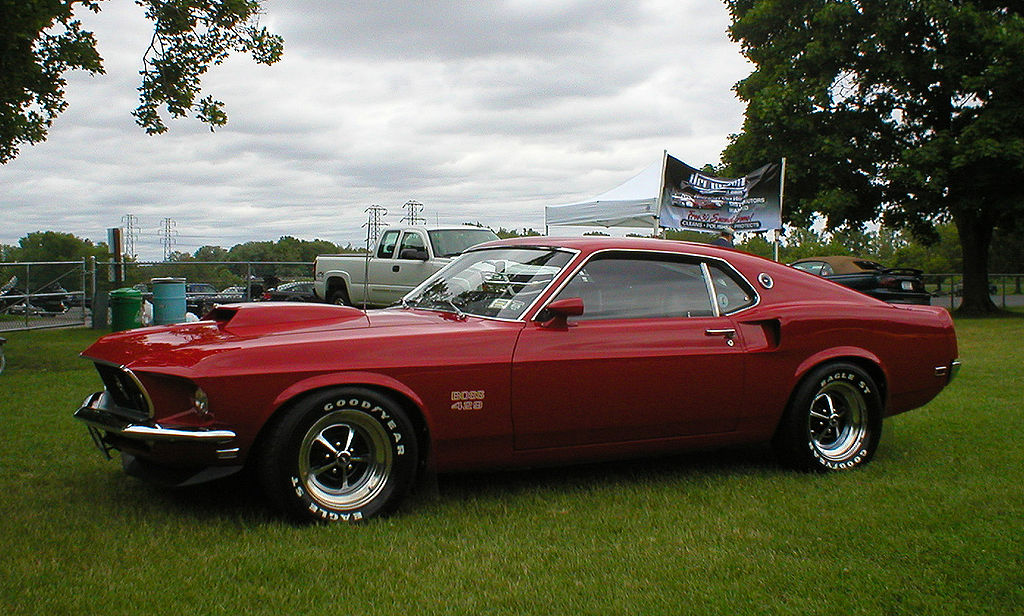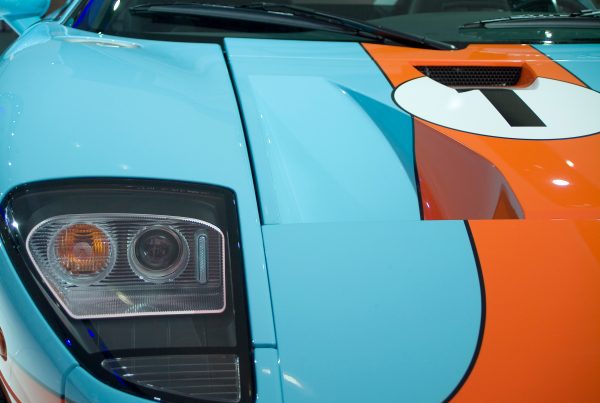It was the “Mona Lisa of Mustangs;” the hero car in what is arguably the greatest car chase scene in the history of film. And Steve McQueen raced it down the busy streets of downtown San Francisco––further solidifying the highland ’68 Mustang as one of the most iconic movie cars in history.
A Mustang for the Masses
Ever since its debut in the 1960s, the Mustang has been Ford’s poster child and perhaps a visible face of the American automotive scene. At a time in which Americans had few options of foreign car models to choose from, domestic cars like Ford’s sporty bucket-seat Mustang dominated the auto market.
The Mustang, envisioned by Ford’s general manager Lee Iacocca, was created with the hopes of boosting the struggling automaker’s profits. The original pony car forged his reputation in the industry and turned the American auto market on its head.
Then came the 1970s Mustang.
A Subtle Yet Poignant Change
It was John Naughton, a Ford Motor Company Vice President of the Ford Division, who said, “With a more powerful nine-engine lineup, additional muscle-car options, and the new colors, the 1970 Mustang comes on stronger and sportier than ever before.”
The change, however, was more subtle. The 1970 Mustang saw no major transformation that would set it apart from the rest of the Mustang lineup. With borrowed parts from the 1969 body, the 1970 Mustang body looked practically identical, with only external visual modifications setting it apart from former models.
Interior modifications consisted of a different steering wheel, new high-back bucket seats, and the addition of an optional interior decor group. Even with subtle changes, the 1970s Mustang was an eye-grabber with a hotter engine and an array of 70s color schemes sure to make you stand out on the interstate and during 5-o’clock traffic.
The 1970s lineup included the hardtop, convertible, fastback designed Sports roof, Grande hardtop, Mach I, Boss 302, and the limited production Boss 429.
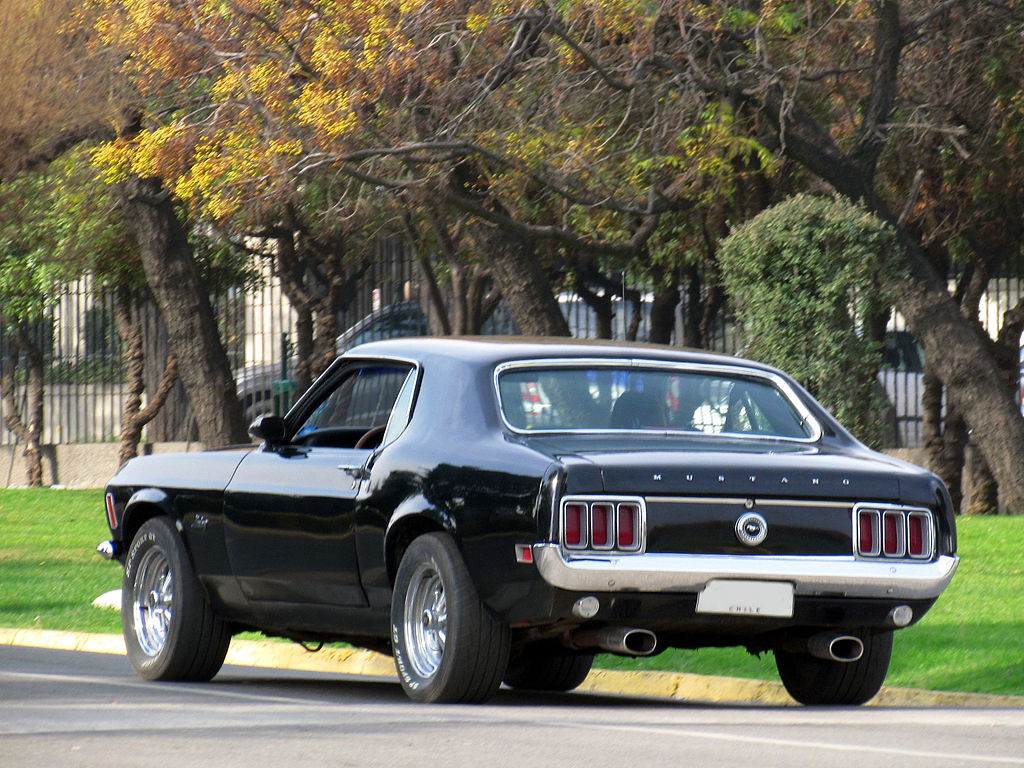
1969 Mach I
Lunging from concept car to reality, the Mach I joins the 1970s Mustang lineup as a performance-bent option. Available only on the fastback body, the Mach I package stands out with its matte-black hood decal, hood pins, a standard hood scoop, front and rear spoilers, and a louvered rear window.
As far as engines go, buyers are offered the standard 351-cubic-inch Windsor V8 to a 390 to a 428-cubic-inch Cobra Jet. Buyers can also choose between three-speed manual and automatic transmissions.
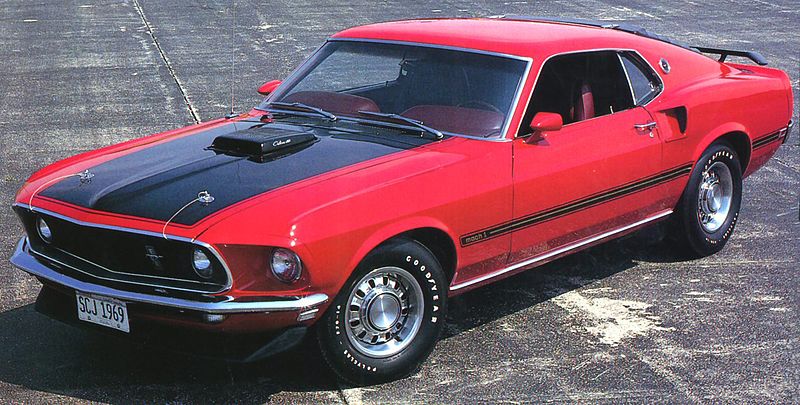
1970 Mach I
A year a difference doesn’t make. For 1970, Ford doesn’t mess with the Mach I much. Instead, smaller, more subtle changes are made, like slimming down the running lights into a more square unit. The only mechanical change is a switch from 351-cubic-inch Windsor power to Cleveland V8 power.

1971-1973 Mach I
Mach I’s starting to slow down as a new year brings performance changes to the overall torque and drive of the famed muscle car. With more bark than bite, the 1971 Mach I features a new body style, added weight, which hampers performance and fastback profile. Still, there are some noteworthy highlights: a new big V8 block, cool induction options, and plenty of visual goodies like spoilers, scoops, and beloved stripes.
Under the hood, you’ll find an unimpressive 302 V8 down to a piddling 210 horsepower. And unfortunately, the trend continued the following year in 1972. For 1972, rated horsepower is taken down a few notches due to a change from SAE gross to net measurements. How much power is lost exactly? Undecided. However, the optics are poor.
Minimal differences exist between the ’71 and ’72 Mach I, except for the development of the R-code motor––essentially a low-compression version of the Boss 351 engine––an otherwise potent performer.
Just like its predecessor, the 1973 Mach I quietly comes onto the scene largely unchanged. A few aesthetic revisions include a grille re-design, fog lights, headlight bezel, and a large wide racing stripe across the flanks.
This is the last year for the first-gen Mustang.
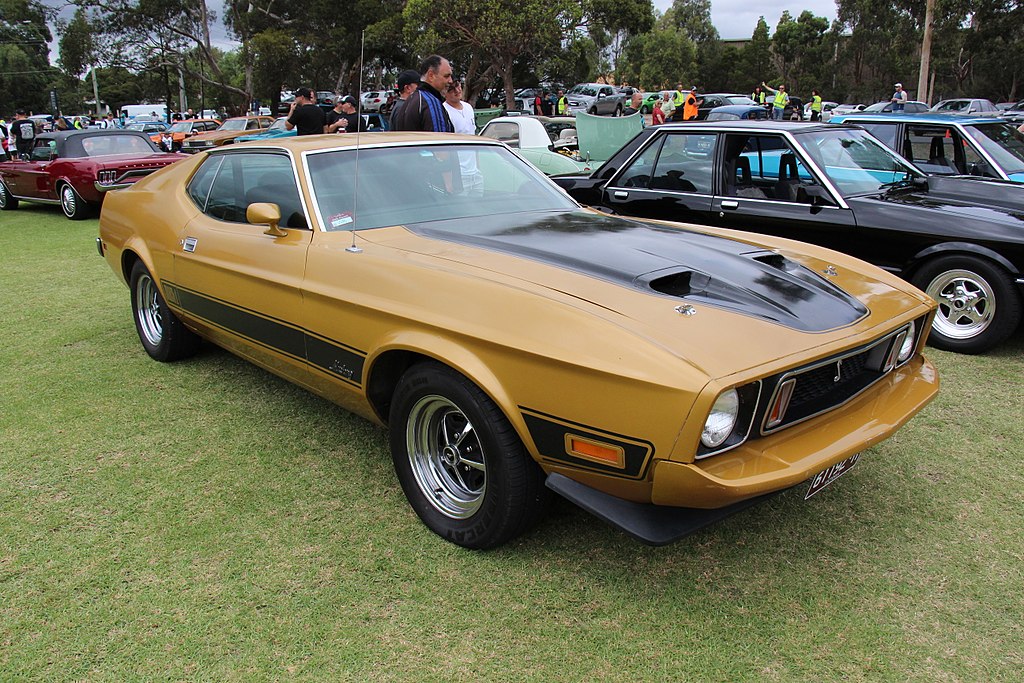
1974-78 Mustang II Mach I
Looked on with controversy, the Mustang II comes to the scene ridiculed and seen as the low point of the pony’s reputation. In 1974, the Mustang II doesn’t bring much power to the table. Besides the car’s misshapen appearance, it receives a 2.8-liter V6 engine as a standard package.
A year later, Ford throws a curveball and includes a V8 engine. Although strong, the 1975 Mustang II only coughs out about 140 horsepower. This seems to be the end of otherwise short tenure.

1969-1970 Boss 302
Perhaps one of Ford’s most highly sought after muscle cars, the Boss 302 was introduced in 1969 and immediately became an automotive legend. The Boss 302 was born out of a racing mindset, as Ford was pursuing the strategy, “Race on Sunday, Sell on Monday.”
When the Mustang was first debuted, Ford asked for Carroll Shelby’s help to make the car race-ready. But by 1969, Shelby was ready to take a break from designing cars. Without his hand in the re-design, there wasn’t much hope for the Boss 302 to become a racing machine. Ford needed a new contender; in walked Larry Shinoda. Larry Shinoda’s deep hot-rod history made him the perfect person to introduce the Boss 302 to the racing scene.
Shinoda gave the Boss 302 its performance specs, its iconic look, and even its name. From there, it went on to do what it was intended to do––reclaim the SCCA Trans-Am Championship.
The Boss’s engine was one of the most important parts of the car’s build. From 0-60 in 6.9 seconds, the Boss was built with an engine to win. In order to make the car surpass its own limitations, Shinoda and his team replaced the Windsor block’s cylinder heads with less restrictive Cleveland engine heads. The Boss would be the first Mustang to use the Cleveland heads. The result? Absolutely phenomenal. The Boss 302’s original horsepower is listed at 290, but many Ford engineers put it much higher than that.
With all equipment, the total horsepower equaled about 314; 390 when stripped down.
Several small changes were made between 1969 and 1970. The only significant performance-related change was to the suspension.

1969-1970 Boss 429
Like its Boss 302 sibling, the Boss 429 Mustang boasted impressive performance specs and a sexy, sleek appearance. It was only produced through 1970, but its legacy far outweighs its numbers.
While Ford built the Boss 302 to overshadow its competitor Chevrolet in the SCCA, the 429 was built to challenge NASCAR; and challenge it did. During the 1969 NASCAR season, the Boss 429 came through with a whopping 26 wins in the year. Dramatic changes in leadership at Ford made the car’s racing legacy come to a fast halt, but its accolades are well documented.
From 0-60 in 6.5 seconds and a top speed of 128 mph, the Boss 429 lived up to its name. The car’s horsepower resting somewhere in the high-300s. The real magic of the Boss 429, though, was its engine; a hemispherical “crescent” combustion chamber––a first for Ford.
Unlike its sibling, the Boss 302, the Boss 429 never made a reappearance in Ford’s lineup. It’s a rarity for a vehicle to be able to secure its legacy in only two years, but it’s the Boss 429’s ability to maintain its status that makes it appealing to people today.
